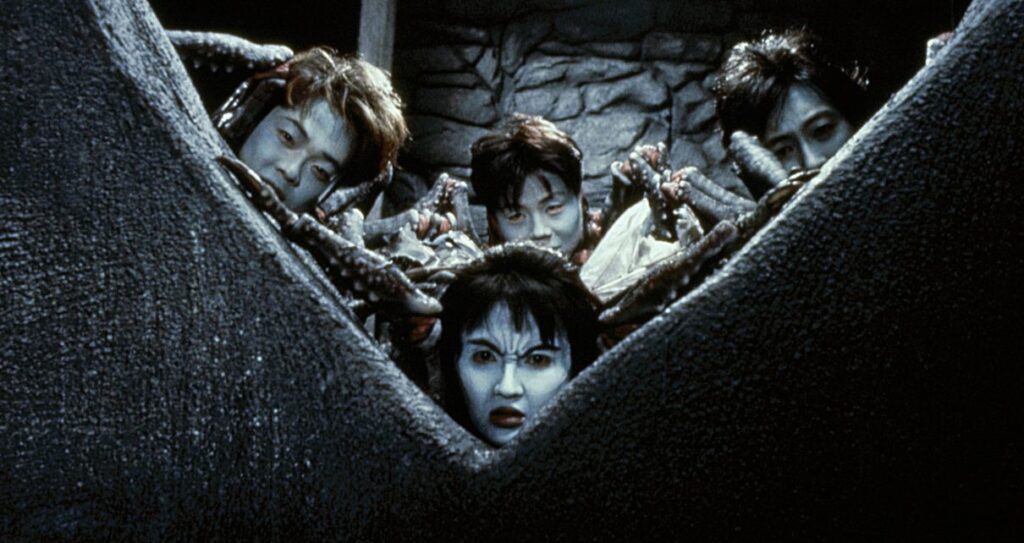
The iconoclast Shinya Tsukamoto followed his avant-garde masterpiece Tetsuo: The Iron Man (1989) with the mainstream horror-comedy Hiruko The Goblin (1991). While Tsukamoto retains some of his trademark body-horror elements in Hiruko The Goblin, the film itself lacks the sophisticated social and political allegories of his earlier works.
Hiruko The Goblin could best be described as a mixture of Ghostbusters (1984) and Sam Raimi’s classic Evil Dead II (1987) but set on a high school campus. The goblin of the title is a school girl’s head (Megumi Ueno) that scurries about on spider-like legs that protrude from her skull. This monster’s appearance is both unsettling and oddly comic. While the girl’s face pulls campy expressions the movement and sound of the spider legs is chilling.
Likewise the dramatic stakes for the heroes, Reijirou Hieda (Kenji Sawada) and Masao Yabe (Masaki Kudou), are very real while their instruments for combating evil are the campy inventions of a William Castle feature. Hieda’s instruments shoot sparks and blink red lights as evil approaches for another slapstick battle for humanity. All this occurs while Hiruko collects the heads of innocents to mount on its fellow goblins, claiming the lives of Masao’s father and his three best friends.
It’s director Tsukamoto’s gift for practical and video effects that give Hiruko The Goblin a unique urgency that any other filmmaker would have been incapable of. For all of its silliness, Hiruko The Goblin never fails to take itself seriously as a film. At times this can make Tsukamoto’s humor somewhat inaccessible, but repeated viewings reveal Hiruko The Goblin to be singularly affecting.
Hiruko The Goblin has always either been overlooked or dismissed as Tsukamoto’s “work for hire” picture. And while that may technically be the case, one can see the filmmaker laying the groundwork for the techniques that he would bring to Tetsuo II: Body Hammer (1992). It’s also intriguing to see Tsukamoto working in a more mainstream, big budget context where he is able to explore more traditional compositions.
